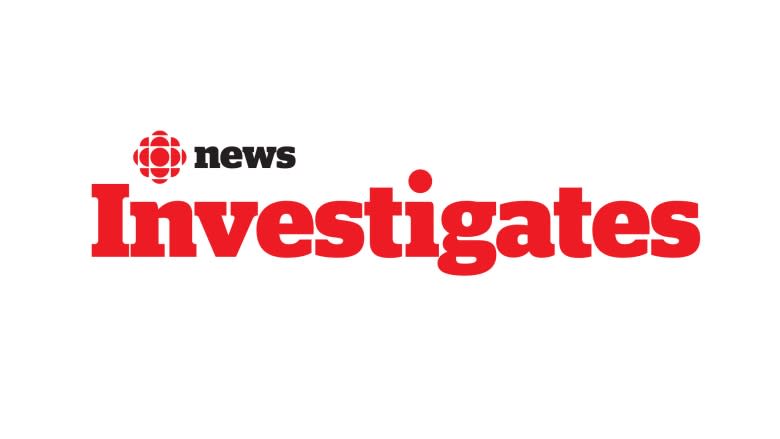2011 sex trade report: what was said, what's been done
It's been more than four years since the Newfoundland and Labrador government commissioned a report on the province's sex trade.
But it wasn't until earlier this month that a redacted version was released to the public.
The provincial government had previously claimed that vulnerable people would be endangered if anyone even knew the report existed.
CBC News reported on the recommendations contained in the document two years ago — a decision that was condemned at the time by politicians and the police.
Newfoundland and Labrador's information commissioner ruled earlier this month that most of the report could be released without harming anyone. The province accepted that recommendation.
Here is some of what that report found four years ago, some of the recommendations that were made, and what has happened since to address those issues that were highlighted at the time.
What the report found: sex trade is everywhere
Most of the sex trade is hidden in communities throughout the province, the report said, although there is an easily identifiable commercial sex trade in St. John's and Corner Brook.
Massage parlours, strip clubs, escort services and street workers are common in the metro St. John's region, with workers sometimes bringing in thousands of dollars a week.
"There's nothing that happens on the mainland that doesn't happen in St. John's," the report said.
"People can order a sex worker like they can order a pizza. Name the characteristics that you want: male, female, colour, age, size, etc."
The sex trade is also common in industrial work camps, the report said, and some truck drivers will give women rides across the province in exchange for sex.
Angela Crockwell, the director of the Coalition Against the Sexual Exploitation of Youth (CASEY), was part of the research committee for the 2011 report.
Crockwell said that since the report was released, the sex trade has largely moved indoors, with many sex workers advertising their services online, as opposed to on street corners.
Children and youth at risk
The report describes widespread child and youth sexual exploitation in Newfoundland and Labrador.
It says youth and children are the most sought-after sex trade workers, and are often sold for the highest prices.
"So many young people are being violated all the time," the report noted.
"They're good people, and the situation isn't getting any better for them."
The average age for a child to first experience sexual exploitation is 14, according to the report, with girls as young as 12 "turning tricks" in some communities.
Survival sex
People most commonly begin work in the sex trade as a means of survival, the report said, trading sex for food, transportation, drugs or a place to sleep.
Having "couch sex" for a place to spend the night is an increasing problem in rural communities and in Labrador, it concluded, due to a growing homelessness problem.
This puts women at an increased risk of sexual assault, it said, with women often feeling guilty about intruding into the home and not reporting the incident.
Drugs and addiction
The report said many people get into the sex trade as a means of supporting a drug habit, and that helping those with addictions goes hand in hand with helping those in the sex trade.
Beyond trading sex for street drugs, the report said some doctors trade pills for sexual favours, acting as drug dealers for their patients.
Child pornography
Child pornography is also a major issue in the province, according to the report, with high rates of porn production and a large viewership.
"The truth is there is someone in everybody's life that watches child porn. If you walk down the street, you have just seen four or five men involved with child porn," the report stated.
Not just a women's issue
Both women and men are involved in the sex trade, although the report says it's much harder to figure out who the males are.
"There is great reluctance for them to come forward and say they are victims," it said.
"Everything about them is threatened by this, including their masculinity."
Courts in bars
The report criticized the practice of holding circuit court in a bar, as was the case in some Newfoundland and Labrador communities.
"There's no waiting room, only a hall where an abused woman will have to sit face to face with her abuser," it said.
"There's absolutely no respect for the woman."
This practice has changed, according to the Department of Justice — in fact, it has not happened since 2012, when circuit court was held in a hotel bar in Hopedale.
Extreme violence
The report says the sex trade is extremely violent, with the street being the most dangerous place to work.
Sex workers are constantly exposed to weapons and abuse, it said, and date rape is a common occurrence.
"Date rape and exploitation go hand in hand," said the report.
"[Girls and women] wake up in bed with someone they don't know they don't know what happened and are in a big panic. They don't know if he used a condom or not."
21 recommendations — what's been done since
The 2011 report made 21 recommendations, spanning areas from health care to police services to education.
Susan Sullivan, minister responsible for the status of women, recently told CBC News the government has responded in some way to all 21 recommendations.
Crockwell, however, said more work needs to be done at a community level.
RNC and RCMP
Crockwell said that the most notable improvements so far have been in better police responsiveness to child exploitation.
Since the report was released, the RNC and RCMP have formed a joint provincial task force on child exploitation and drugs, and have specific units focused on child exploitation.
The RNC and RCMP now provide sexual exploitation training to their cadets, as well as in-service training to current members.
Government actions
In 2015, the province established an advisory council on crime and community safety, which Sullivan said has been a key improvement.
Crockwell said that since the report was completed, there has been more collaboration between government, police and community groups, including a semi-annual collaborative meeting to discuss issues related to sexual exploitation.
Funding for CASEY
Although it was one of the report's recommendations, there is still no provincial funding for CASEY, to provide community level interventions for those in the sex trade and to offer public training on sexual exploitation.
Crockwell said that the organization has asked for $100,000 a year, in order to hire a few staff members and be able to operate in communities beyond the Avalon Peninsula.
"We're the first people to identify what's happening for people, and being nimble enough to intervene appropriately," Crockwell said.
"This is such a critical recommendation."
The government has come under fire over the past few years for not funding the Safe Harbour Outreach Project, an organization that supports women who work in the sex trade.
Just before the 2011 report was released this month, however, government announced $127,000 in funding for the project next year.
Health care
The report also recommended hiring a street nurse and implementing anonymous HIV and sexually-transmitted infection (STI) testing.
This week, the provincial government announced it is hiring a street nurse and two family doctors to provide healthcare from downtown St. John's. The news was welcomed by the St. John's Status of Women council, which has been advocating for a street nurse for several years.
Sullivan also said that more training in sexual exploitation is now available to Eastern Health employees.
In terms of addiction services, Crockwell said she's been pleased to see new detox beds for youth with addictions in Gander, as well as a detox bed specifically for those with mental health issues in Paradise.
What's next
Crockwell said that since the report was published, community groups like CASEY now have a better level of understanding about the sex trade.
Although more work is needed, she said more people have taken an interest in improving conditions.
"We're in a better place, not significantly better, because we don't have a tonne of money or resources or staffing for this," she said.
"But I do think the community has really come together and said, we have to figure out how to do this and do it better."
Sullivan said that government will commission another report into the sex trade soon.
Crockwell, however, said she's doubtful that informants will be willing to provide information, after it took so long for the last report to be made public.






